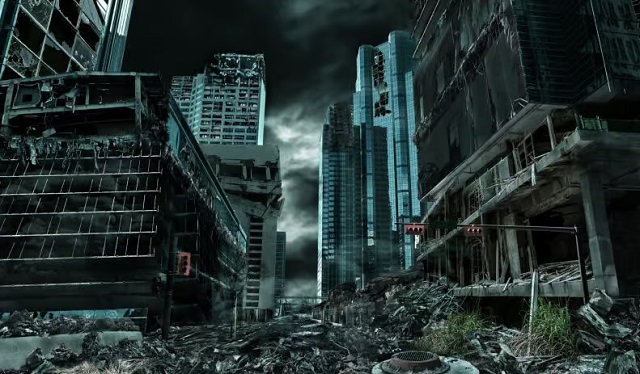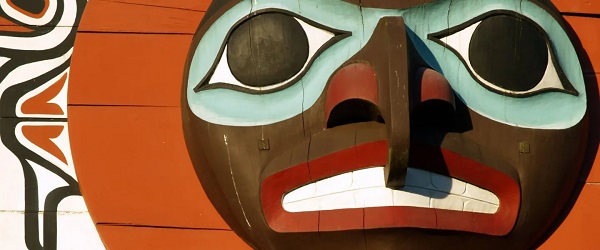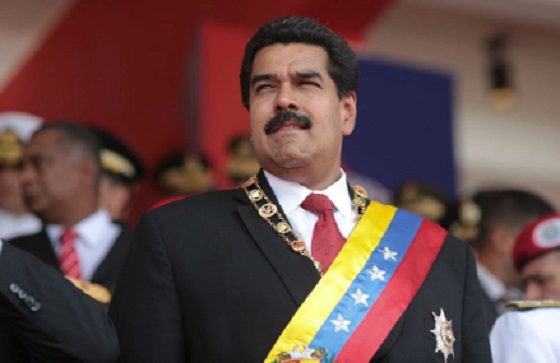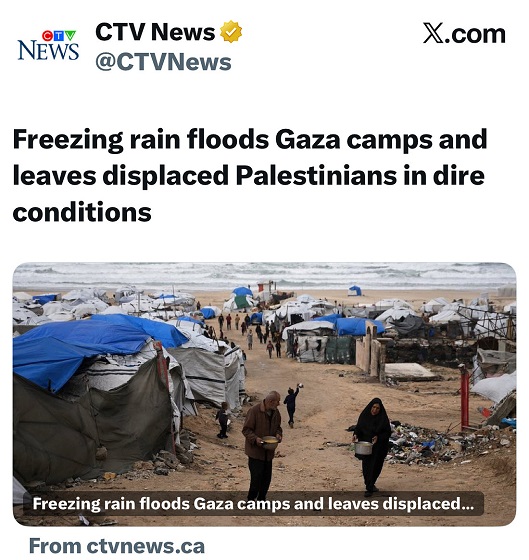Business
What Will Become of Cities?

From the Brownstone Institute
BY
Everyone was supposed to be back at the office by now. It’s not really happening, however, and this has huge implications for the future of the American city.
Part of the reason is the cost, not only the finances of commuting but also the time. Another contributing factor is the crime and homeless population, which can be quite scary. Between inflation, rising poverty, substance abuse, and rampant post-lockdown incivility, the cities have become far less attractive. The impact on the commercial sector is becoming ever more clear.
Leases are coming up for large office spaces in major cities around the US. But there is a serious problem on the way. Occupancy of these offices is dramatically down in most places around the country. The decline is 30 percent on average and much more in San Francisco, Chicago, and New York City. That’s for now but many tech companies and others have laid off workers, meaning that even the companies that renew will be looking to downsize dramatically and with shorter-term leases.
Dylan Burzinski of Green Street writes in the Wall Street Journal:
“What began as a two-week work-from-home experiment in March 2020 evolved into an entrenched hybrid/remote work environment. Despite return-to-office mandates, office-utilization rates (how many people are physically in an office on any given day) have failed to pick up meaningfully this year and are still 30% to 40% below 2019 levels for most office markets across the country. Employers have shed office space as a result, helping send the amount of office space available for lease shooting up to historic highs across most major U.S. cities. The so-called availability rates are hovering at 25% on average compared with slightly above 15% before Covid—and things could get worse before they get better.”
You might say: there is nothing wrong with remote work. This would have happened regardless. Cities as we know them will pass into the night eventually as the whole world becomes digital.
That might be true in the long term, but it would have been far better to happen organically and not by force. That was the essence of what Burzinski calls the “pandemic” but of course it wasn’t a pathogen that sent millions out of the cities and leaving for the suburbs. It was the forced closures and then vaccine mandates and compulsory segregation by vaccine status.
For a time, cities like New York City, Boston, Chicago, and New Orleans were using state power to exclude shot refuseniks any normal public accommodations. The unvaccinated could not go to the library, the theater, restaurants and bars, and museums. It’s hard to believe that this actually happened in the land of the free but that is the real history of just two years ago.
Then once workers got a taste of remote work, and they fully realized just how ridiculously annoying the commute and office culture truly is, they would not and could not be pushed back into a full-time relationship with the office. That has left half and fully empty skyscrapers in multiple cities in the US.
The signs of doom are everywhere. A poll of New Yorkers has 60% saying that life quality is falling and this is in part due to far less quality foot traffic. San Francisco has record office vacancies. Even large cities in Texas have 25% vacancies. Population declines in many cities are continuing long after pandemic restrictions have been lifted.
And here is Boston.com:
Absent flexibility from building owners, businesses worry that downtown will see even more vacancies and that tourists and office workers slowly returning to the neighborhood will have less reason to make the trip. Consider the worst-case scenario: Downtown falls further into post-pandemic disarray or a long-feared “doom loop.”
Like many big-city downtowns, Boston is still in the midst of its recovery after COVID. Many offices and ground-floor spaces remain empty, and buildings lately have sold for sizable losses. Fears about what downtown will become were only exacerbated by the bankruptcy of the coworking giant WeWork, one of the largest office tenants in Boston.
How far this will go and what the implications will be is anyone’s guess. Will the skylines change? Are we looking at demolitions of some of the grandest structures in the coming years? It’s not entirely out of the question. Economic reality can be like a brick wall: when the expense consistently outpaces the revenue, something has to change.
Why not convert office spaces to domestic apartments? It’s not so easy. The buildings put up after the Second World War were made for air conditioning and had wide footprints without windows in a large swath of the space. That simply doesn’t work for apartments. Cutting a giant hole down the middle is technically possible but economically expensive, requiring the rents in the resulting properties to be in the luxury range.
The next phase will be the fiscal crisis. Dying business districts, declining population, empty office buildings all mean falling tax revenue. The budgets won’t be cut because of pension obligations and school funding. The next place to look is to the capital for bailouts and then of course the federal government. But those will only buy time and certainly won’t address the underlying problem.
What bugs me most about this is just how much it fits with the dream of Anthony Fauci as he and his co-author explained back in August of 2020. Writing months after lockdowns, with American cities on fire with protests, he wrote that we need “radical changes that may take decades to achieve: rebuilding the infrastructures of human existence, from cities to homes to workplaces, to water and sewer systems, to recreational and gatherings venues.”
If your view is that the real problem with infectious disease traces to “the neolithic revolution, 12,000 years ago,” as they claim, you are going to have a serious problem with cities. Recall that this is the guy who said we need to stop shaking hands, forever. The notion of a million people working and socializing together in a few square miles of space is something that would run contrary to the entire vision.
Klaus Schwab of the WEF, too, has an issue with large cities, too, of course, with constant complaints about urbanization and the imagined world in which large swaths of our lives are spent online rather than with friends.
So a tremendous downscaling of cities might have been part of the plan all along. You will notice that none of the cities on the chopping block seem to be offering a viable plan for saving themselves. They could dramatically cut taxes, deregulate childcare, open up more schooling options, turn police attention to petty crime and carjacking instead of traffic fines, and open up zoning. That’s not happening.
New York is going the opposite direction, having effectively banned AirBnB in the city. Why did the city council do this? Because too many renters with space found it more lucrative to offer short-term rentals and overnight stays rather than make long-term contracts for residents. This is a sneaky way of pillaging property owners, not exactly a good plan for attracting real estate investment.
All of this speaks to a much bigger problem, which is that the whole political system seems to be engaged in an amazing game of “Let’s pretend” despite the overwhelming evidence of the disaster that has befallen us. No serious efforts are underway to reverse the damage of pandemic lockdowns and vaccine mandates and segregation. This is partly because there has been zero accountability or even honest public debate about what governments around the country did from 2020-2022. We live amidst the carnage but justice seems farther off than ever.
Yes, a complete reversal is possible but it seems ever less likely, especially with the continued efforts to purge from public life those who dissented during the crisis, as well as the intensifying censorship on all mainstream media platforms.
Once you step back from it, nothing really makes sense. One might suppose that when a whole society – and really globe – embarked on such a crazy experiment and utterly failed in every way, that there would be a major effort to come to terms with it.
The opposite is happening. Even with America’s treasured cities in such grave danger, so much of it provoked by terrible policies over four years, we are still supposed to either not notice or chalk it all up to some inexorable forces of history of which no one has any control.
Business
Virtue-signalling devotion to reconciliation will not end well

From the Fraser Institute
By Bruce Pardy
In September, the British Columbia Supreme Court threw private property into turmoil. Aboriginal title in Richmond, a suburb of Vancouver, is “prior and senior” to fee simple interests, the court said. That means it trumps the property you have in your house, farm or factory. If the decision holds up on appeal, it would mean private property is not secure anywhere a claim for Aboriginal title is made out.
If you thought things couldn’t get worse, you thought wrong. On Dec. 5, the B.C. Court of Appeal delivered a different kind of upheaval. Gitxaala and Ehattesaht First Nations claimed that B.C.’s mining regime was unlawful because it allowed miners to register claims on Crown land without consulting with them. In a 2-to-1 split decision, the court agreed. The mining permitting regime is inconsistent with the United Nations Declaration on the Rights of Indigenous People (UNDRIP). And B.C. legislation, the court said, has made UNDRIP the law of B.C.
UNDRIP is a declaration of the United Nations General Assembly. It consists of pages and pages of Indigenous rights and entitlements. If UNDRIP is the law in B.C., then Indigenous peoples are entitled to everything—and to have other people pay for it. If you suspect that is an exaggeration, take a spin through UNDRIP for yourself.
Indigenous peoples, it says, “have the right to the lands, territories and resources which they have traditionally owned, occupied or otherwise used or acquired… to own, use, develop and control, as well as the right to “redress” for these lands, through either “restitution” or “just, fair and equitable compensation.” It says that states “shall consult and cooperate in good faith” in order to “obtain free and informed consent prior to the approval of any project affecting their lands or territories and other resources,” and that they have the right to “autonomy or self-government in matters relating to their internal and local affairs, as well as ways and means for financing their autonomous functions.”
The General Assembly adopted UNDRIP in 2007. At the time, Canada sensibly voted “no,” along with New Zealand, the United States and Australia. Eleven countries abstained. But in 2016, the newly elected Trudeau government reversed Canada’s objection.
UN General Assembly resolutions are not binding in international law. Nor are they enforceable in Canadian courts. But in 2019, NDP Premier John Horgan and his Attorney General David Eby, now the Premier, introduced Bill 41, the Declaration on the Rights of Indigenous Peoples Act (DRIPA). DRIPA proposed to require the B.C. government to “take all measures necessary to ensure the laws of British Columbia are consistent with the Declaration.” The B.C. Legislature unanimously passed the bill. (The Canadian Parliament passed a similar bill in 2021.)
Two years later, the legislature passed an amendment to the B.C. Interpretation Act. Eby, still B.C.’s Attorney General, sponsored the bill. The amendment read, “Every Act and regulation must be construed as being consistent with the Declaration.”
Eby has expressed dismay about the Court of Appeal decision. It “invites further and endless litigation,” he said. “It looked at the clear statements of intent in the legislature and the law, and yet reached dramatically different conclusions about what legislators did when we voted unanimously across party lines” to pass DRIPA. He has promised to amend the legislation.
These are crocodile tears. The majority judgment from the Court of Appeal is not a rogue decision from activist judges making things up and ignoring the law. Not this time, anyway. The court said that B.C. law must be construed as being consistent with UNDRIP—which is what Eby’s 2021 amendment to the Interpretation Act says.
In fact, Eby’s government has been doing everything in its power to champion Aboriginal interests. DRIPA is its mandate. It’s been making covert agreements with specific Aboriginal groups over specific territories. These agreements promise Aboriginal title and/or grant Aboriginal management rights over land use. In April 2024, an agreement with the Haida Council recognized Haida title and jurisdiction over Haida Gwaii, an archipelago off the B.C. coast formerly known as the Queen Charlotte Islands. Eby has said that the agreement is a template for what’s possible “in other places in British Columbia, and also in Canada.” He is putting title and control of B.C. into Aboriginal hands.
But it’s not just David Eby. The Richmond decision from the B.C. Supreme Court had nothing to do with B.C. legislation. It was a predictable result of years of Supreme Court of Canada (SCC) jurisprudence under Section 35 of the Constitution. That section guarantees “existing” Aboriginal and treaty rights as of 1982. But the SCC has since championed, evolved and enlarged those rights. Legislatures can fix their own statutes, but they cannot amend Section 35 or override judicial interpretation, even using the “notwithstanding clause.”
Meanwhile, on yet another track, Aboriginal rights are expanding under the Charter of Rights and Freedoms. On the same day as the B.C. Court of Appeal decision on UNDRIP, the Federal Court released two judgments. The federal government has an actionable duty to Aboriginal groups to provide housing and drinking water, the court declared. Taxpayer funded, of course.
One week later, at the other end of the country, the New Brunswick Court of Appeal weighed in. In a claim made by Wolastoqey First Nation for the western half of the province, the court said that Aboriginal title should not displace fee simple title of private owners. Yet it confirmed that a successful claim would require compensation in lieu of land. Private property owners or taxpayers, take your pick.
Like the proverb says, make yourself into a doormat and someone will walk all over you. Obsequious devotion to reconciliation has become a pathology of Canadian character. It won’t end well.
Business
Vacant Somali Daycares In Viral Videos Are Also Linked To $300 Million ‘Feeding Our Future’ Fraud


From the Daily Caller News Foundation
Multiple Somali daycare centers highlighted in a viral YouTube exposé on alleged fraud in Minnesota have direct ties to a nonprofit at the center of a $300 million scam, the Minnesota Star Tribune reported Thursday.
The now-infamous videos from YouTube influencer Nick Shirley, posted Dec. 26, showed several purported Somali-run daycare centers receiving millions in taxpayer funds despite little evidence that children were actually present at the facilities. Now it turns out that five of the 10 daycare centers Shirley visited operated as meal sites for Feeding Our Future, the Minnesota-based nonprofit implicated in a massive fraud scheme that has already produced dozens of convictions, the outlet reported.
Between 2018 and 2021, those five businesses received nearly $5 million from Feeding Our Future, the outlet reported. While none of the centers in Shirley’s video have been legally accused of wrongdoing, the revelations underscore the sprawling web of fraud engulfing the state. (RELATED: Somalis Reportedly Filled Ohio Strip Mall With Potential Fraudulent Childcare Centers)
Dear Readers:
As a nonprofit, we are dependent on the generosity of our readers.
Please consider making a small donation of any amount here.
Thank you!
🚨 Here is the full 42 minutes of my crew and I exposing Minnesota fraud, this might be my most important work yet. We uncovered over $110,000,000 in ONE day. Like it and share it around like wildfire! Its time to hold these corrupt politicians and fraudsters accountable
We ALL… pic.twitter.com/E3Penx2o7a
— Nick shirley (@nickshirleyy) December 26, 2025
Federal prosecutors have charged over 70 individuals — mostly from the Somali community — with stealing more than $300 million from the Federal Child Nutrition Program through Feeding Our Future. During the COVID-19 pandemic, the program funded sites across Minnesota to provide meals to children. Prosecutors say leaders of Feeding Our Future, along with dozens of associates who ran sponsored “meal sites,” submitted false or inflated meal counts to claim reimbursements.
One facility featured in Shirley’s video, the Minnesota Best Childcare Center, received $1.5 million from Feeding Our Future, according to the Minnesota Star Tribune.
Minnesota Best Childcare Center, which has been licensed by the state since 2013, did not respond to the Daily Caller News Foundation’s request for comment.
Other daycares featured in Shirley’s video have been cited dozens of times for rule violations while continuing to receive millions in state funding. The now-infamous Quality “Learing” Center was cited for 121 violations in the past three years, including for failing to report a “death, serious injury, fire or emergency as required,” according to the Star-Tribune.
The paper’s investigation found that six of the facilities featured by Shirley were either closed or employees did not open their doors.
Following that exposé, which has accumulated more than 135 million views on X, the Trump administration announced it would freeze all childcare disbursements to Minnesota while federal officials review how taxpayer dollars have flowed to licensed providers.
The fraud allegations extend beyond childcare, with prosecutors claiming millions in taxpayer funds were also stolen from Minnesota’s Housing Stabilization Services and autism treatment programs. Federal prosecutors also estimate that as much as half of the roughly $18 billion Minnesota has spent since 2018 on 14 Medicaid programs may have been siphoned off by fraudsters.
Even the state’s assisted living program has come under scrutiny, with Republican state Rep. Kristin Robbins warning that individuals connected to the Feeding Our Future scheme continue to receive millions in taxpayer funds.
-

 Energy1 day ago
Energy1 day agoThe U.S. Just Removed a Dictator and Canada is Collateral Damage
-

 International2 days ago
International2 days agoTrump Says U.S. Strike Captured Nicolás Maduro and Wife Cilia Flores; Bondi Says Couple Possessed Machine Guns
-

 International1 day ago
International1 day agoUS Justice Department Accusing Maduro’s Inner Circle of a Narco-State Conspiracy
-

 Daily Caller22 hours ago
Daily Caller22 hours agoScathing Indictment Claims Nicolás Maduro Orchestrated Drug-Fueled ‘Culture Of Corruption’ Which Plagued Entire Region
-

 Business2 days ago
Business2 days agoVacant Somali Daycares In Viral Videos Are Also Linked To $300 Million ‘Feeding Our Future’ Fraud
-

 International2 days ago
International2 days ago“Captured and flown out”: Trump announces dramatic capture of Maduro
-

 Haultain Research1 day ago
Haultain Research1 day agoTrying to Defend Maduro’s Legitimacy
-

 Opinion16 hours ago
Opinion16 hours agoHell freezes over, CTV’s fabrication of fake news and our 2026 forecast is still searching for sunshine


